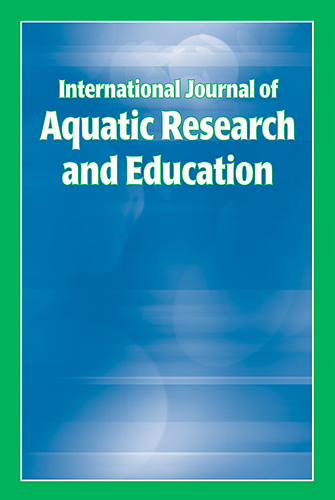Home > Journals > IJARE > Vol. 10 > No. 4 (January 2019)
Volume 10, Number 4 (January 2019)
In This Issue 10(4)
This final issue of Volume 10 features a number of outstanding papers that all relate to drowning prevention. I encourage readers to read them all carefully. Several of these papers undoubtedly will rate as Top 10 and "must read" papers.I need to personally thank these authors and co-authors as well as others for their incredible patience. Several of these and other articles have been queued up for an extraordinarily long time while we have labored to reduce the backlog of reviews. We are making steady progress, but we still need your patience. Thanks in advance.
Editorial
This final issue of Volume 10 begins with a short, intentionally-playful editorial about the topic of my grandsons and very early swimming talent identification. I hope readers find it to be enjoyable as well as thought-provoking.
Research Articles
The research articles in this issue as I mentioned above are simply outstanding. I encourage readers to explore them in some detail.
The first article, "Risk Factors for Boating Incidents in Inuvik, Northwest Territories, Canada," authored by Catherine Glass and Audrey Giles from the University of Ottawa, is a detailed look at boating risks among Canadian aboriginal residents. This article is among a series of published inquiries about swimming and drowning prevention in northern Canada.
The second article may be one of the most outstanding drowning prevention studies IJARE has had the opportunity to publish. Our frequent author, Kevin Moran from the University of Auckland in New Zealand, has written, "Can You Float? Part I - Perceptions and Practice of Unsupported Flotation Competency among Young Adults." For those interested in developing water competence and drowning prevention, this first experiment of a two-part study is an absolutely terrific examination of how accurately young adults perceive their floating competence, before and after being tested in the water. This is a well-written manuscript that you really should read!
The third research article is another in an interesting line of inquiry about lifeguards and victim recognition from Lyndsey Lanigan-Leitzel of Eastern Connecticut State University. The article, "An Examination of the Severity of Aquatic Incidents," examines how well lifeguards and non-lifeguards can determine if video images of potentially risky aquatic incidents are severe or not. You will want to read it - trained lifeguards don't necessarily outperform non-trained individuals. It has implications for how we train lifeguards.
Research Note
A research note on swimming for children with autism spectrum disorder by Ms. Erin Kraft, University of Ottawa, is a well-written article with practical ideas for helping swim instructors who may work with differently-abled individuals.
Educational Article
An educational article comes from "down under." Nina Nyitrai, Suzi Edwards, and Nicholas O'Dwyer wrote "Drowning Prevention: Define and Then Gather Evidence or Gather Evidence to Define?" dealing with concerns about how to approach practices to prevent drowning.
Scientific Reviews
This issue concludes with two scientific reviews that were authored by members of the American Red Cross Scientific Advisory Council. We publish them to illustrate evidence-based reviews of topics of interest to swim instructors and researchers not only in the US, but around the world. The first review deals with the longstanding controversy about minimal age at which children should begin formal swim lessons. Some recent research has reinforced the value to early learn-to-swim experiences. The second revision of a previous review, "Assisting Drowning Victims: Effective Water Rescue Equipment for Lay-responders," reviews the minimal evidence available for how well non-trained bystanders may be able to use rescue equipment similar to ring buoys or throw lines.
Enjoy reading these articles. As I predicted in the first paragraph, some of these articles very well could be "classics in the making." Steve Langendorfer
Founding Editor, International Journal of Aquatic Research and Education
Editorial
Editorial: Born to Swim?
Stephen J. Langendorfer Ph.D.
Research Articles
Can You Float? Part I - Perceptions and Practice of Unsupported Flotation Competency among Young Adults
Kevin Moran Ph.D.
Risk Factors for Boating Incidents in Inuvik, Northwest Territories, Canada
Catherine TR Glass and Audrey R. Giles
An examination of the severity of aquatic incidents
Lyndsey K. Lanagan-Leitzel
Research Note
Examining the Perceived Impacts of Recreational Swimming Lessons for Children with Autism Spectrum Disorder
Erin Kraft M.A. Ed.
Education Article
Drowning Prevention: Define and Then Gather Evidence or Gather Evidence to Define?
Nina J. Nyitrai, Suzi Edwards, and Nicholas O'Dwyer
Scientific Literature Reviews
Revised Scientific Review: Minimum Age for Swim Lessons
Stephen J. Langendorfer Ph.D.
